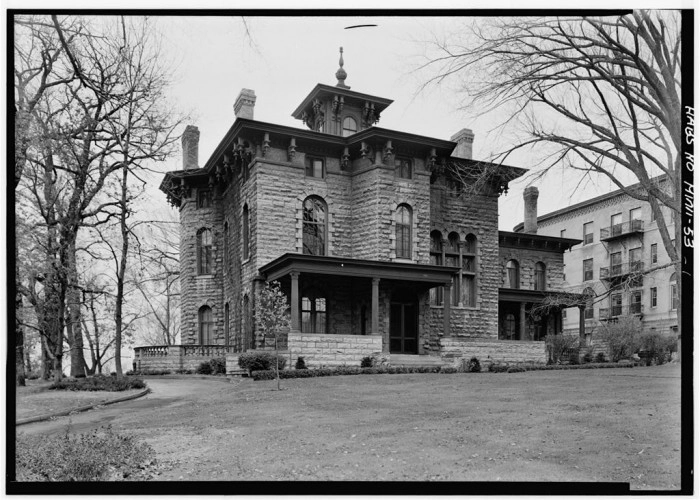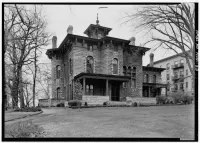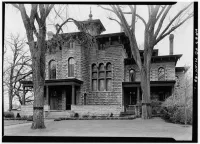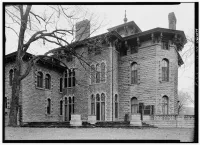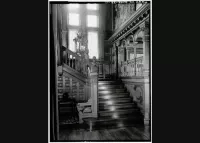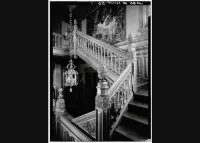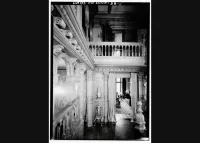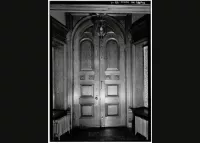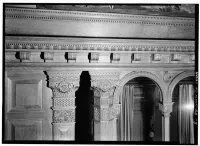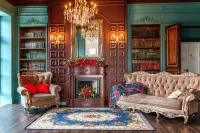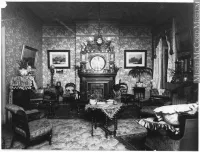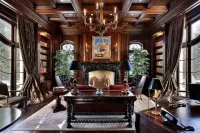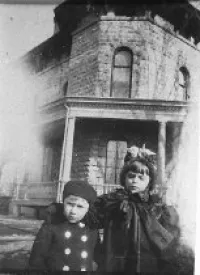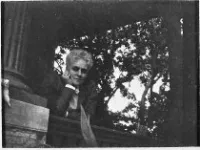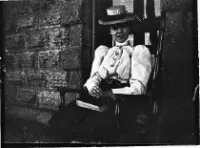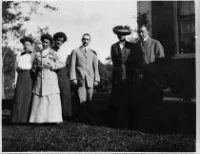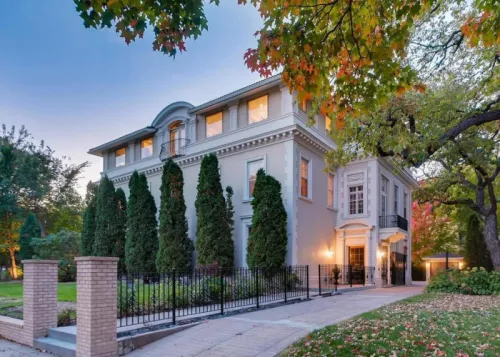Share what you know,
and discover more.
Share what you know,
and discover more.
Sep 16, 1971
Sep 16, 1971
432 Summit Ave, St Paul, MN
Photos from the Library of Congress, 09/16/1971Posted Date
Jan 13, 2022
Historical Record Date
Sep 16, 1971
Source Name
Library of Congress
Source Website
Delete Story
Are you sure you want to delete this story?
Jun 01, 1971
Jun 01, 1971
Design Inspiration - Add originality to your home
Visit our design marketplace for era-specific items tailored to your home.Posted Date
Nov 08, 2023
Historical Record Date
Jun 01, 1971
Source Website
Delete Story
Are you sure you want to delete this story?
Oct 15, 1970
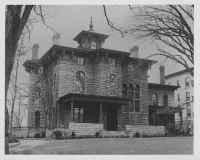
-

- Dave D
National Register of Historic Places
Burbank - Livingston - Griggs House Except from the Summary of Significance: The significance of the Burbank-Livingstone-Griggs House has been appropriately defined in a recently published article's Minnesota's most elaborate example of mid-19th century Italianate architecture. The mansion on Summit Avenue was built by James Crawford-Burbank, a native of Vermont, who came to St. Paul via New York and Wisconsin to operate a lumber business. His professional accomplishments are many, including Ramsey County Commissioner, state representative, and the individual responsible for the reorganization of the St. Paul Fire and Marine Insurance Companies. He began building his mansion in 1862, completing it a year later at an initial cost of $22,000. The mansion included many unique features for its days steam heat, hot and cold running water, gaslighting, and brick-lined walls. The latter was supposedly immune to moisture and rat-proof. James Burbank died in June 1876, the St. Paul Dispatch carried an appropriate epitaph: “…his history is the history of St, Paul, and the state; his own successes and failures being so closely allied with their settlement and development as to preclude the mention of one without the other." Thomas Fletcher Oakes and his family made the mansion their residence from 1883 to 1887, while he applied his ambitions as General Manager of Henry Villard's Northern Pacific Railroad. Crawford Livingston moved there with his bride in 1888; he was to establish the St, Paul Gas Light Company. The Livingston family occupied the house the longest of any previous tenants; here daughter Mary was married to Theodore Wright Griggs, a Yale graduate and partner in Griggs, Cooper, and Company (wholesale grocers) in 1915. Following the deaths of Crawford Livingston and his wife in 1925, the house was known as the Griggs Residence. Mrs. Griggs embarked on a project to install elaborate rooms taken from French and Italian houses in Europe, each appropriately furnished with period pieces and art treasures. The architectural and interior splendor of the Burbank-Livingston-Griggs house is illustrative of the lifestyles and value systems of wealthy America 'from 1862 to 1930.
National Register of Historic Places
Burbank - Livingston - Griggs House Except from the Summary of Significance: The significance of the Burbank-Livingstone-Griggs House has been appropriately defined in a recently published article's Minnesota's most elaborate example of mid-19th century Italianate architecture. The mansion on Summit Avenue was built by James Crawford-Burbank, a native of Vermont, who came to St. Paul via New York and Wisconsin to operate a lumber business. His professional accomplishments are many, including Ramsey County Commissioner, state representative, and the individual responsible for the reorganization of the St. Paul Fire and Marine Insurance Companies. He began building his mansion in 1862, completing it a year later at an initial cost of $22,000. The mansion included many unique features for its days steam heat, hot and cold running water, gaslighting, and brick-lined walls. The latter was supposedly immune to moisture and rat-proof. James Burbank died in June 1876, the St. Paul Dispatch carried an appropriate epitaph: “…his history is the history of St, Paul, and the state; his own successes and failures being so closely allied with their settlement and development as to preclude the mention of one without the other." Thomas Fletcher Oakes and his family made the mansion their residence from 1883 to 1887, while he applied his ambitions as General Manager of Henry Villard's Northern Pacific Railroad. Crawford Livingston moved there with his bride in 1888; he was to establish the St, Paul Gas Light Company. The Livingston family occupied the house the longest of any previous tenants; here daughter Mary was married to Theodore Wright Griggs, a Yale graduate and partner in Griggs, Cooper, and Company (wholesale grocers) in 1915. Following the deaths of Crawford Livingston and his wife in 1925, the house was known as the Griggs Residence. Mrs. Griggs embarked on a project to install elaborate rooms taken from French and Italian houses in Europe, each appropriately furnished with period pieces and art treasures. The architectural and interior splendor of the Burbank-Livingston-Griggs house is illustrative of the lifestyles and value systems of wealthy America 'from 1862 to 1930.
Oct 15, 1970
National Register of Historic Places
Burbank - Livingston - Griggs HouseExcept from the Summary of Significance:
The significance of the Burbank-Livingstone-Griggs House has been appropriately defined in a recently published article's Minnesota's most elaborate example of mid-19th century Italianate architecture. The mansion on Summit Avenue was built by James Crawford-Burbank, a native of Vermont, who came to St. Paul via New York and Wisconsin to operate a lumber business. His professional accomplishments are many, including Ramsey County Commissioner, state representative, and the individual responsible for the reorganization of the St. Paul Fire and Marine Insurance Companies. He began building his mansion in 1862, completing it a year later at an initial cost of $22,000.
The mansion included many unique features for its days steam heat, hot and cold running water, gaslighting, and brick-lined walls. The latter was supposedly immune to moisture and rat-proof. James Burbank died in June 1876, the St. Paul Dispatch carried an appropriate epitaph: “…his history is the history of St, Paul, and the state; his own successes and failures being so closely allied with their settlement and development as to preclude the mention of one without the other."
Thomas Fletcher Oakes and his family made the mansion their residence from 1883 to 1887, while he applied his ambitions as General Manager of Henry Villard's Northern Pacific Railroad. Crawford Livingston moved there with his bride in 1888; he was to establish the St, Paul Gas Light Company. The Livingston family occupied the house the longest of any previous tenants; here daughter Mary was married to Theodore Wright Griggs, a Yale graduate and partner in Griggs, Cooper, and Company (wholesale grocers) in 1915.
Following the deaths of Crawford Livingston and his wife in 1925, the house was known as the Griggs Residence. Mrs. Griggs embarked on a project to install elaborate rooms taken from French and Italian houses in Europe, each appropriately furnished with period pieces and art treasures.
The architectural and interior splendor of the Burbank-Livingston-Griggs house is illustrative of the lifestyles and value systems of wealthy America 'from 1862 to 1930.
Posted Date
Jan 13, 2022
Historical Record Date
Oct 15, 1970
Source Name
United States Department of the Interior - National Parks Service
Delete Story
Are you sure you want to delete this story?
1960
1960
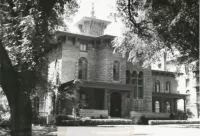
-

- Marley Zielike
Architecture Home Place
Photograph of the exterior of a building identified as Burbank-Livingston-Griggs House. Located in the Historic Hill District of St. Paul at 432 Summit Avenue, this home was built from 1862 - 1865 for a wealthy owner of the Minnesota State Company, James C. Burbank. This property is listed on the National Register of Historic Places.
Architecture Home Place
Photograph of the exterior of a building identified as Burbank-Livingston-Griggs House. Located in the Historic Hill District of St. Paul at 432 Summit Avenue, this home was built from 1862 - 1865 for a wealthy owner of the Minnesota State Company, James C. Burbank. This property is listed on the National Register of Historic Places.
Architecture Home Place
Photograph of the exterior of a building identified as Burbank-Livingston-Griggs House. Located in the Historic Hill District of St. Paul at 432 Summit Avenue, this home was built from 1862 - 1865 for a wealthy owner of the Minnesota State Company, James C. Burbank. This property is listed on the National Register of Historic Places.Posted Date
Sep 27, 2021
Historical Record Date
1960
Source Name
Ramsey County Historical Society
Delete Story
Are you sure you want to delete this story?
1900
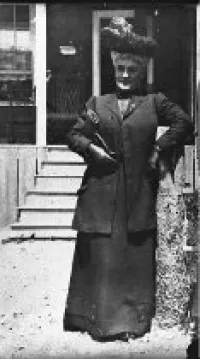
People of Minnesota
Black and white photograph of an older woman, Mary Steele Potts Livingston, standing on the sidewalk in front of a house.
1900
People of Minnesota
Black and white photograph of an older woman, Mary Steele Potts Livingston, standing on the sidewalk in front of a house.Posted Date
Sep 27, 2021
Historical Record Date
1900
Source Name
Ramsey County Historical Society
Delete Story
Are you sure you want to delete this story?
1900
1900
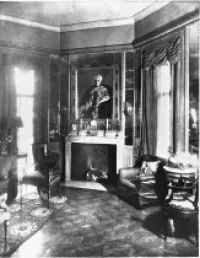
Home People of Minnesota
Black and white photograph of a lavish room in a house, with a portrait of Mary Steele Potts Livingston, hanging over a fireplace.
Home People of Minnesota
Black and white photograph of a lavish room in a house, with a portrait of Mary Steele Potts Livingston, hanging over a fireplace.Posted Date
Sep 27, 2021
Historical Record Date
1900
Source Name
Ramsey County Historical Society
Delete Story
Are you sure you want to delete this story?
1900
1900
People of Minnesota Place
Black and white photograph of two children standing outside Griggs home St. Paul.Posted Date
Sep 27, 2021
Historical Record Date
1900
Source Name
Ramsey County Historical Society
Delete Story
Are you sure you want to delete this story?
1900
1900
People of Minnesota
Black and white photograph of an older woman, Mary Steele Potts Livingston, on the porch of a house.Posted Date
Sep 27, 2021
Historical Record Date
1900
Source Name
Ramsey County Historical Society
Delete Story
Are you sure you want to delete this story?
1900
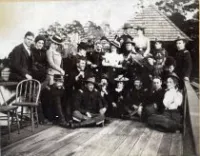
People of Minnesota Place
Black and white photograph of large group of women and soldiers on the porch at a lake house. Theodore Wright Griggs is in the front row, second from left.
1900
People of Minnesota Place
Black and white photograph of large group of women and soldiers on the porch at a lake house. Theodore Wright Griggs is in the front row, second from left.Posted Date
Sep 27, 2021
Historical Record Date
1900
Source Name
Ramsey County Historical Society
Delete Story
Are you sure you want to delete this story?
1900
1900
People of Minnesota
Black and white photograph of Mary Livingston sitting on the porch of a house.Posted Date
Sep 27, 2021
Historical Record Date
1900
Source Name
Ramsey County Historical Society
Delete Story
Are you sure you want to delete this story?

People of Minnesota
Black and white photograph of a group of domestic staff at the Livingston Griggs house. Some are wearing maid uniforms. The University Club of Saint Paul building appears in the background.
People of Minnesota
Black and white photograph of a group of domestic staff at the Livingston Griggs house. Some are wearing maid uniforms. The University Club of Saint Paul building appears in the background.Posted Date
Sep 27, 2021
Source Name
Ramsey County Historical Society
Delete Story
Are you sure you want to delete this story?
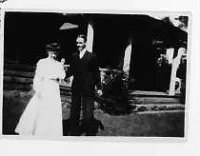
People of Minnesota
Black and white photograph of a well-dressed man and woman standing in front of a house, likely members or friends of Livingston-Griggs family.
People of Minnesota
Black and white photograph of a well-dressed man and woman standing in front of a house, likely members or friends of Livingston-Griggs family.Posted Date
Sep 27, 2021
Source Name
Ramsey County Historical Society
Delete Story
Are you sure you want to delete this story?
People of Minnesota
Black and white photograph of six people standing in a yard next to a house.Posted Date
Sep 27, 2021
Source Name
Ramsey County Historical Society
Delete Story
Are you sure you want to delete this story?
